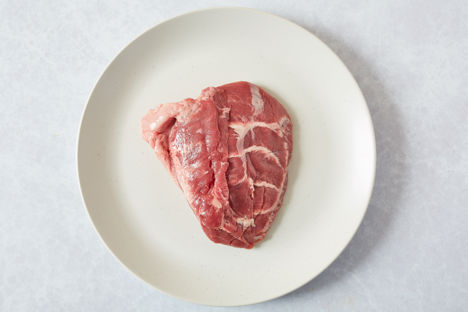Pork cheeks, as the name would suggest, are the little nuggets of flesh found in the cheek of the pig. Not to be confused with the jowl, which is the surrounding area of the face and is more fat (albeit tasty fat) than meat. The cheeks are meaty little portions marbled with fat, which make them melt-in-the-mouth tender once slow cooked.
Often overlooked, these are a cheap little cut and make a stew or casserole that little bit more special. As they are quite underused, you may need to order from your butcher especially. Due to the fat content which melts away during cooking, they shrink quite a bit so bear this in mind when purchasing; 2–3 per person is a good main portion size.
Slow cooking ensures the cheeks aren't tough and gives the fat time to render out, so they're meltingly tender. To maximise on flavour, sear your cheeks in a frying pan first until they're golden all over, and then slow cook them until they're just on the brink of falling apart.
As pork is classically paired with apple, cider makes a great braising liquor, but you could also use white wine with stock, or red wine with a tin of tomatoes. The recipe below for a simple pork cheek stew feeds 4.
Metric
Imperial
- 12 pork cheeks
- flour, for dusting
- 1 onion, roughly chopped
- 1 carrot, roughly chopped
- 1 leek, roughly chopped
- 1 stick of celery, roughly chopped
- 1 bulb of garlic, sliced horizontally
- 1l dry cider
- 500ml of chicken stock
- 1 apple, cored and roughly chopped
- 1 handful of fresh thyme
- 2 bay leaves
- 5 peppercorns, crushed
Pork cheek inspiration
The Spanish braise prized Iberico pig cheeks in sherry with prunes, whilst the Italians cure the jowl and sometimes pig cheeks to make guanciale or ‘face bacon’ – said to be the traditional carbonara ingredient over pancetta. Due to the small size of the cheek, the flavour is stronger than other similar cured pork products. Geoffrey Smeddle is inspired by this with his salsify carbonara with confit pork cheek, crackling and chestnuts.
Russell Brown puts a twist on a classic lasagne by using tender, sous vide pork cheeks instead of mince. Or try something completely different with George Blogg’s glazed ‘tart’ of pig cheeks served with earthy roast celeriac and a palate cleansing pear sorbet.
Get in touch
Please sign in or register to send a comment to Great British Chefs.



